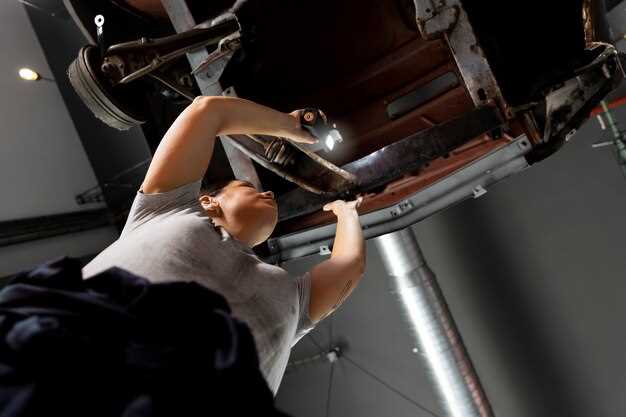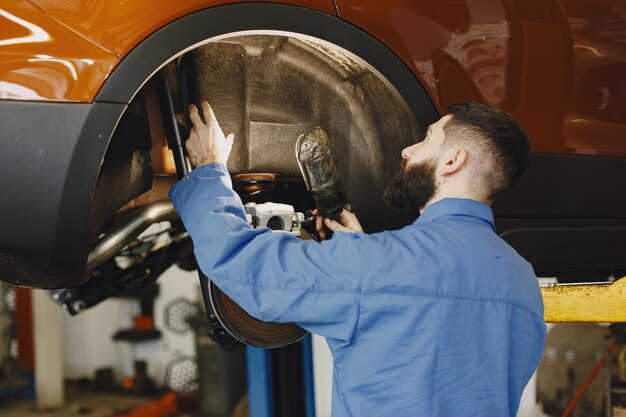
Best Wind Tunnel-Tested Body Kits
- George Harris
- 0
- Posted on

When it comes to optimizing vehicle performance, the impact of aerodynamics cannot be overstated. Body kits designed specifically for enhancing airflow, reducing drag, and increasing downforce are essential components for any serious car enthusiast aiming for greater speed and handling. This article delves into the top wind tunnel-tested body kits that have proven their effectiveness in real-world applications.
Wind tunnel testing provides engineers and designers with crucial insights into how a body kit performs under various conditions. Unlike generic kits that may look good but lack functional benefits, wind tunnel-tested options offer scientifically backed improvements. This ensures that each component, from splitters to spoilers, works synergistically to create a streamlined vehicle.
In this guide, we will explore several body kits that stand out not only for their aesthetic appeal but also for their performance gains. Each kit has undergone rigorous testing to confirm enhancements in aerodynamics and stability, making them top contenders for those who seek to elevate their driving experience. Join us as we uncover the most effective body kits that merge style with substantive performance enhancements.
Analyzing Aerodynamic Improvements of Specific Body Kits

When assessing the aerodynamic efficiency of body kits, one must consider various factors such as drag coefficient, downforce generation, and overall balance. Each body kit is designed with particular goals in mind, and testing in wind tunnels can reveal significant improvements in vehicle dynamics.
One popular body kit among performance enthusiasts is the GT-R-inspired kit, which often includes enhancements like a front splitter, side skirts, and a rear diffuser. Wind tunnel tests show that such kits can reduce drag by up to 10%. The front splitter increases airflow under the vehicle, thereby promoting a low-pressure area that effectively reduces lift, enhancing stability at high speeds.
Another notable example is the widebody kit, commonly used in motorsport applications. This kit typically widens the track width, allowing for large wheel and tire setups that can increase grip. Wind tunnel analysis indicates that these kits can improve downforce by up to 30%, particularly at high speeds, providing better cornering capabilities and reducing the chances of lift, which is crucial during aggressive maneuvers.
Aero spoilers are also instrumental in enhancing vehicle performance. They act by redirecting airflow over the vehicle, increasing the rear downforce without significantly affecting drag. Testing has demonstrated that properly designed spoilers can yield an optimal aerodynamic balance, leading to improved handling and cornering speed, especially in rear-wheel-drive setups.
Moreover, seamless integration of body kit components plays a critical role. Kits that fit well with the original car design minimize turbulence and maximize airflow efficiency. For example, a well-designed full-body kit can maintain a drag coefficient of around 0.28, showcasing how engineering precision leads to tangible performance benefits.
In conclusion, wind tunnel testing of body kits provides invaluable insights into their aerodynamic properties. While each kit has unique features, the overall enhancements in drag reduction and downforce generation significantly improve vehicle performance, leading to better handling, stability, and speed on the track.
Evaluating Material Durability and Weight Reduction in Body Kits

The selection of materials for body kits significantly affects both their durability and weight. Understanding these factors is crucial for performance optimization in automotive design. Common materials used in body kits include fiberglass, polyurethane, carbon fiber, and ABS plastic, each possessing distinct characteristics that influence their overall effectiveness.
Fiberglass is widely known for its lightweight nature and affordability. It offers decent strength and resistance to environmental factors, but it can be susceptible to cracks under high impact. While fiberglass is often the choice for budget-conscious projects, its durability may not meet the demands of high-performance applications.
Polyurethane provides a notable advantage with its flexibility and resilience. Unlike fiberglass, polyurethane body kits can absorb impact better without fracturing, making them suitable for both street and track use. Although slightly heavier than fiberglass, polyurethane’s ability to withstand wear and tear contributes to its longevity.
Carbon fiber stands out as the premium material choice due to its exceptional strength-to-weight ratio. It is significantly lighter than both fiberglass and polyurethane while also boasting remarkable rigidity. However, the high manufacturing costs and risks of damage from impacts limit its accessibility for some enthusiasts. Properly cared for, carbon fiber components can enhance vehicle performance and aesthetics over time.
ABS plastic serves as a versatile alternative, combining decent impact resistance and moderate weight. It is commonly used in OEM applications and offers ease of manufacturing, which can translate into lower costs. However, ABS may not perform as well as fiberglass or polyurethane in high-stress conditions, particularly at extreme temperatures.
Weight reduction in body kits is not solely about material choice; design factors also play a significant role. Aerodynamically optimized shapes can enhance downforce and reduce drag, thereby improving performance even further. By carefully evaluating both material durability and design efficiency, manufacturers can create body kits that not only look good but also contribute to overall vehicle performance.
In conclusion, selecting the right materials for body kits demands a balanced approach between durability and weight reduction. Weighing the pros and cons of each material allows automotive enthusiasts to make informed decisions that align with their performance goals and driving conditions.
Understanding Installation Procedures and Compatibility with Popular Models
When considering a body kit for enhancing vehicle performance, understanding the installation procedures and compatibility with popular models is crucial for ensuring optimal results. Here, we provide insights into these aspects to help you make informed decisions.
Installation Procedures
Installing a body kit can vary significantly based on the design and complexity of the kit. Here are the general steps involved:
- Preparation:
- Gather all necessary tools, including wrenches, screwdrivers, and adhesive materials.
- Prepare the work area by ensuring it is clean and organized.
- Read the instruction manual that comes with the body kit for specific guidance.
- Removing Existing Components:
- Carefully remove stock parts, such as bumpers or side skirts, if necessary.
- Keep track of all screws and clips as they may be needed for reinstallation.
- Fitting the Body Kit:
- Align the body kit components with the car’s body to check for proper fit.
- Make adjustments to the kit or car as needed to ensure alignment.
- Securing the Kit:
- Use the provided hardware to secure the components firmly.
- If adhesive is recommended, apply it carefully following instructions to ensure a strong bond.
- Final Inspection:
- Ensure everything is securely attached and aligns properly.
- Check for any gaps or misalignments that may affect aerodynamics.
Compatibility with Popular Models
Not all body kits are universally compatible. Here are some popular models and key considerations for compatibility:
- Honda Civic:
- Various kits exist for different generations; ensure the specific model year is accounted for.
- Popular for street and racing setups; kits often enhance both aesthetics and performance.
- Ford Mustang:
- Body kits typically enhance aggressive styling and improve aerodynamics.
- Check fitment options for different engine sizes and trim levels.
- Subaru WRX:
- Look for kits that complement the car’s all-wheel-drive system and sporty design.
- Aftermarket options can contribute to downforce and cooling efficiency.
- Chevrolet Camaro:
- Compatible with various performance upgrades; check for precise fitment according to the model year.
- Styling options often focus on both visual impact and improved airflow.
Understanding these installation procedures and compatibility considerations will help ensure you choose the right body kit for your vehicle, maximizing both performance and aesthetics.
